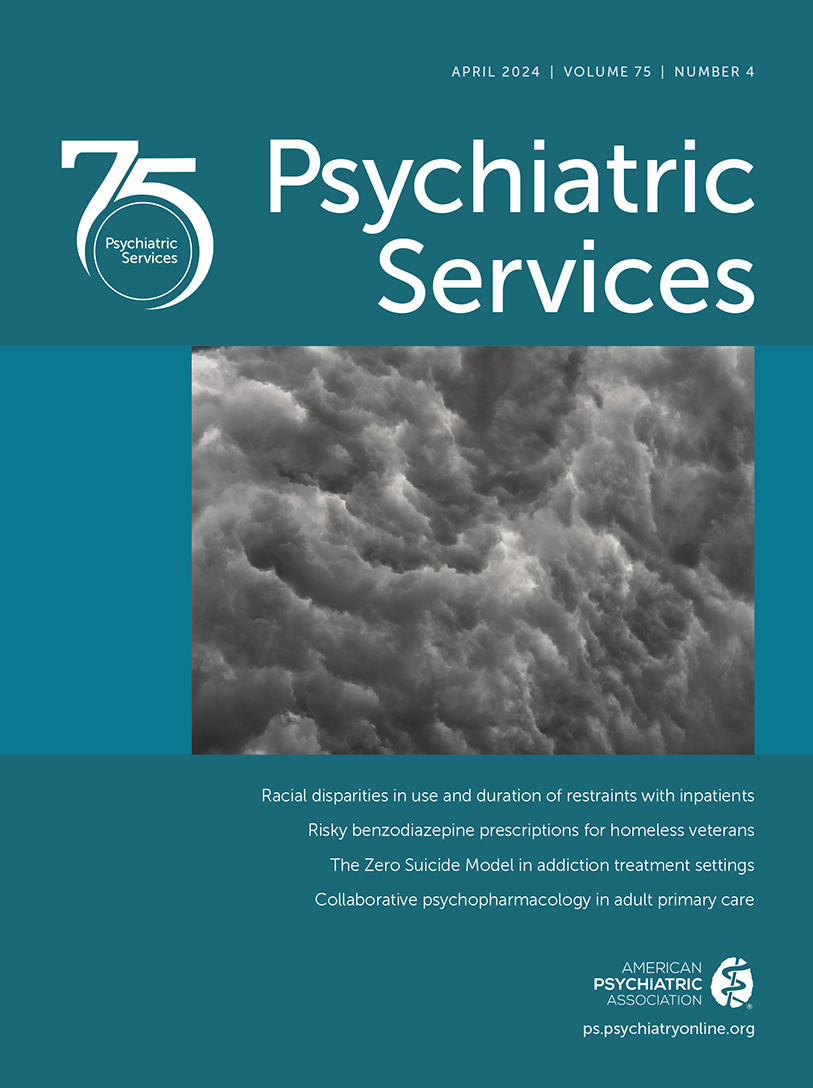Benzodiazepine Prescriptions for Homeless Veterans Affairs Service Users With Mental Illness
Abstract
Objective:
Despite elevated risk for substance use disorder and overdose death in the homeless population, benzodiazepine prescribing for this population has not been examined. In this study, the authors used data from the U.S. Department of Veterans Affairs (VA) health care system to examine benzodiazepine prescribing and risky and potentially inappropriate benzodiazepine prescribing practices for homeless VA service users.
Methods:
Using national VA administrative data (2018–2019), the authors conducted logistic regression to compare likelihood of benzodiazepine prescribing and t tests to compare indicators of risky and potentially inappropriate benzodiazepine prescribing patterns for homeless service users with mental illness (N=244,113) and their housed peers (N=2,763,513).
Results:
Unadjusted analyses showed that benzodiazepines were prescribed for 7.5% of homeless VA service users with mental illness, versus 9.4% of their housed peers (p<0.001). Analyses adjusted for sociodemographic and clinical characteristics and health care utilization showed that homeless service users were less likely than their housed peers to receive a benzodiazepine prescription (AOR=0.70, 99% CI=0.68–0.72). However, compared with their housed peers, homeless service users received higher rates of risky and potentially inappropriate benzodiazepine prescriptions, including multiple concurrent benzodiazepine prescriptions (9.4% vs. 7.0%, p<0.001) and concurrent prescriptions for benzodiazepines and opioids (36.9% vs. 31.2%, p<0.001) or sedatives (61.9% vs. 45.9%, p<0.001).
Conclusions:
Although homeless VA service users with mental illness were less likely than their housed peers to receive a benzodiazepine prescription, benzodiazepine prescriptions for these service users had more characteristics of risky and potentially inappropriate prescribing.
Access content
To read the fulltext, please use one of the options below to sign in or purchase access.- Personal login
- Institutional Login
- Sign in via OpenAthens
- Register for access
-
Please login/register if you wish to pair your device and check access availability.
Not a subscriber?
PsychiatryOnline subscription options offer access to the DSM-5 library, books, journals, CME, and patient resources. This all-in-one virtual library provides psychiatrists and mental health professionals with key resources for diagnosis, treatment, research, and professional development.
Need more help? PsychiatryOnline Customer Service may be reached by emailing [email protected] or by calling 800-368-5777 (in the U.S.) or 703-907-7322 (outside the U.S.).



